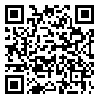Volume 25, Issue 2 (2023)
JAST 2023, 25(2): 485-502 |
Back to browse issues page
1- Department of Soil Science, School of Agriculture, Shiraz University, Islamic Republic of Iran. , m.shirazi741@gmail.com
2- Department of Soil Science, School of Agriculture, Shiraz University, Islamic Republic of Iran.
3- Assistant Prof. Soil and Water Research Institute, Agricultural Research, Education and Extension Organization (AREEO), Karaj, Iran
2- Department of Soil Science, School of Agriculture, Shiraz University, Islamic Republic of Iran.
3- Assistant Prof. Soil and Water Research Institute, Agricultural Research, Education and Extension Organization (AREEO), Karaj, Iran
Abstract: (850 Views)
Over the last three decades, there has been a general tendency for changing research methods on soil resource management from conventional and mainly qualitative methods to quantitative ones based on spatial correlation models, which are called Digital Soil Mapping (DSM). The present study was carried out in Shabankareh Plain (15,000 ha) with different physiographic units, in Bushehr Province, southern Iran. The target sites (172 points) were selected for soil sampling at depths of 0-30 cm. Soil texture classes DSM was produced by two methods. The first method was Conventional DSM, in which data of soil particles was obtained from laboratory analysis for each sampling point along with their geographical location. Also, the study area boundary was added to ArcGIS software in UTM format and was analyzed by operating Kriging or IDW estimators. The map produced by this method was a low quality digital map containing extra and scattered texture classes with unrealistically sharp boundaries. The second method used CoKriging of L8 multispectral imagery data (OLI bands) and soil samples analysis was operated. Results showed that using B1 band (0.433-0.453 µm) of Landsat 8 satellite imageries of the study area in April 2020 produced high quality digital maps. In this method, soil textures were the same as the ones in the study area. Salt accumulation and water content of surface soil were possible reasons indicating why satellite imageries in the other periods of year were not suitable for DSM. The highest and the lowest ranges of influence among soil texture parameters were 684 meters and 388 meter for clay and sand particles, respectively.
Article Type: Original Research |
Subject:
Soil genesis, Classification
Received: 2022/01/10 | Accepted: 2022/04/13 | Published: 2023/03/5
Received: 2022/01/10 | Accepted: 2022/04/13 | Published: 2023/03/5
| Rights and permissions | |
 |
This work is licensed under a Creative Commons Attribution-NonCommercial 4.0 International License. |


